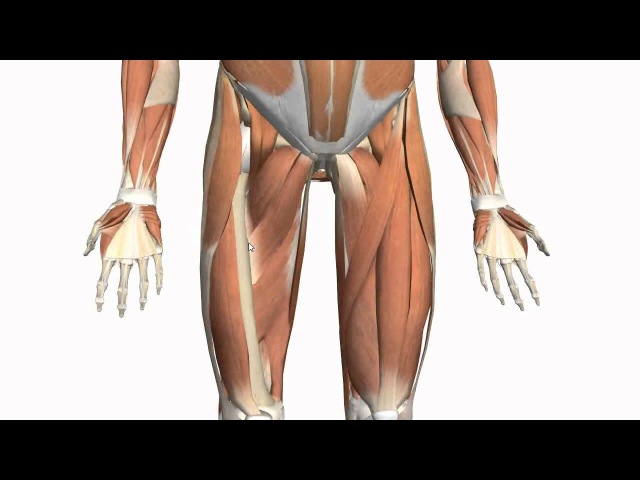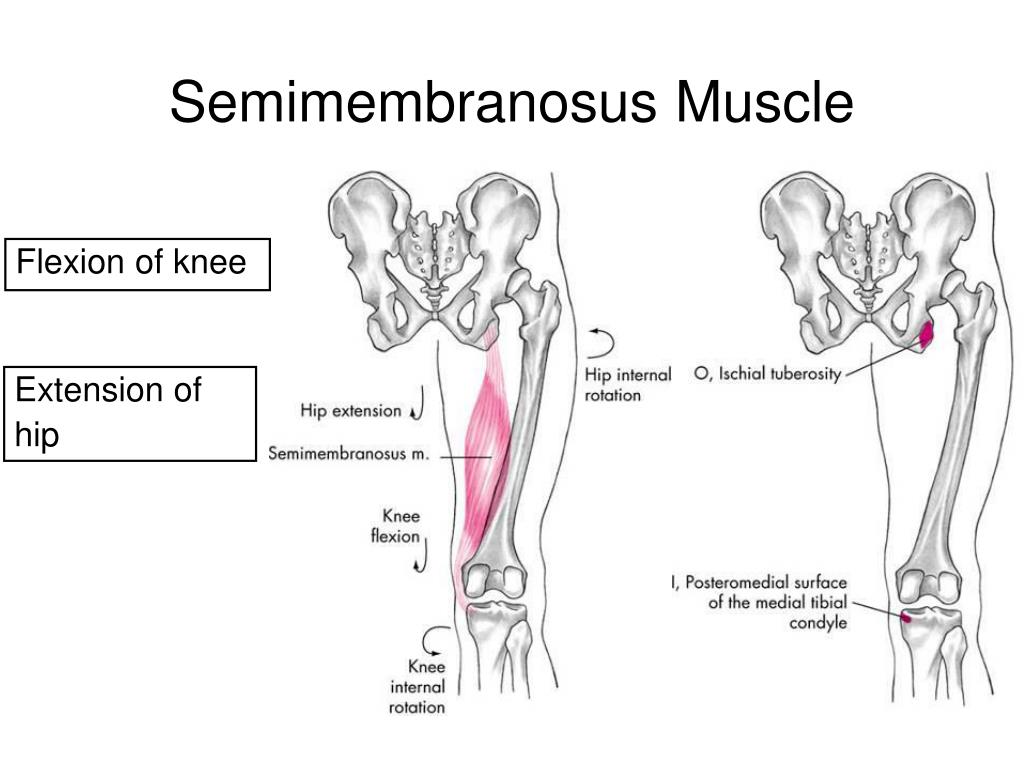Are there muscles in your knee. Knee Muscle Anatomy: Comprehensive Guide to Structure and Function
What muscles are found in the knee. How do the muscles of the knee work together. What are the main functions of knee muscles. How do knee muscles enable movement and stability.
Anatomy of Knee Muscles: Key Muscle Groups and Their Roles
The knee joint is a complex structure that relies on several muscle groups working in harmony to enable movement and provide stability. Understanding the anatomy and function of these muscles is crucial for anyone interested in human physiology, sports medicine, or orthopedics.
Quadriceps Femoris Group
The quadriceps femoris, often simply called “quads,” is a group of four muscles located on the front of the thigh. These muscles play a pivotal role in knee extension and stabilization.
- Rectus femoris
- Vastus lateralis
- Vastus intermedius
- Vastus medialis
The rectus femoris is unique among the quadriceps as it crosses both the hip and knee joints, allowing it to flex the hip while extending the knee. The other three muscles primarily focus on knee extension.

Hamstring Group
Located on the posterior aspect of the thigh, the hamstring muscle group is responsible for knee flexion and hip extension. It consists of three muscles:
- Biceps femoris
- Semitendinosus
- Semimembranosus
These muscles work together to bend the knee and extend the hip, playing a crucial role in activities like walking, running, and jumping.
Functional Anatomy: How Knee Muscles Enable Movement
The muscles surrounding the knee joint work in concert to produce various movements essential for daily activities and athletic performance. Understanding these movements is key to appreciating the complexity of knee function.
Knee Extension
Knee extension is primarily achieved through the contraction of the quadriceps femoris group. This action straightens the leg at the knee joint, increasing the angle between the femur and tibia to approximately 180 degrees. Extension is crucial for activities such as kicking a ball, climbing stairs, or standing up from a seated position.
Knee Flexion
Flexion of the knee is primarily accomplished by the hamstring muscle group. This action decreases the angle between the femur and tibia, bringing the heel closer to the buttocks. Knee flexion is essential for activities like walking, running, and sitting down.

Synergistic Actions: Coordination Between Muscle Groups
While individual muscle groups have primary functions, the true complexity of knee movement lies in the coordinated action of multiple muscle groups working together.
Co-contraction for Stability
Co-contraction of the quadriceps and hamstrings provides stability to the knee joint. This simultaneous activation of opposing muscle groups is particularly important during weight-bearing activities and sudden changes in direction.
Dynamic Stabilization
During activities like walking or running, the muscles around the knee work dynamically to stabilize the joint through various phases of movement. This involves precise timing and coordination of muscle activation and relaxation.
Accessory Muscles: Supporting Cast in Knee Function
While the quadriceps and hamstrings are the primary movers of the knee, several other muscles contribute to knee function and stability.
Gastrocnemius
The gastrocnemius, though primarily an ankle plantar flexor, also crosses the knee joint and assists in knee flexion. This dual-joint muscle plays a role in coordinating knee and ankle movements during activities like walking and running.
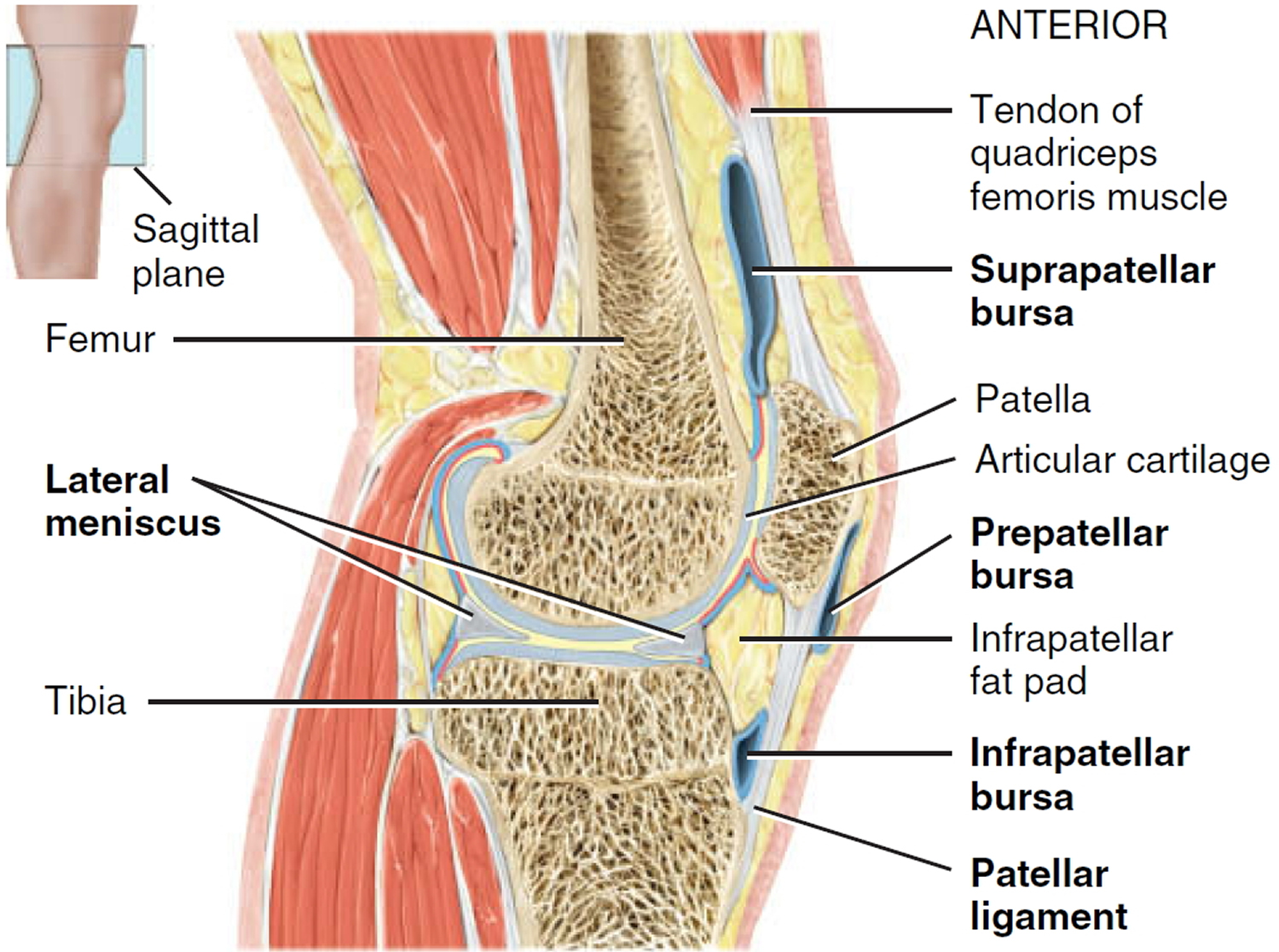
Sartorius
The sartorius, the longest muscle in the human body, runs diagonally across the thigh and assists in knee flexion and hip flexion. It also contributes to medial rotation of the tibia when the knee is flexed.
Popliteus
The popliteus is a small muscle located behind the knee that plays a crucial role in “unlocking” the knee from full extension. It initiates knee flexion and helps stabilize the knee during rotational movements.
Biomechanical Considerations: Knee Muscles in Action
The biomechanics of knee movement involve complex interactions between muscles, bones, and connective tissues. Understanding these interactions is crucial for optimizing performance and preventing injuries.
Lever Systems
The knee joint acts as a lever system, with muscles providing the force, the joint acting as the fulcrum, and the lower leg as the lever arm. This system allows for powerful movements but also puts significant stress on the joint structures.
Force Vectors
The direction of force application by different muscle groups creates various force vectors acting on the knee. These vectors not only produce movement but also contribute to joint compression and shear forces, which can impact joint health over time.

Clinical Relevance: Knee Muscle Pathologies and Rehabilitation
Understanding knee muscle anatomy is crucial in diagnosing and treating various knee-related conditions and injuries.
Common Injuries
Knee muscle injuries often involve strains or tears of the quadriceps or hamstring muscles. These can range from mild strains to complete ruptures, each requiring specific treatment approaches.
Rehabilitation Strategies
Rehabilitation of knee muscle injuries typically involves a progressive program of stretching, strengthening, and functional exercises. The goal is to restore muscle strength, flexibility, and coordination while addressing any biomechanical issues that may have contributed to the injury.
Advanced Concepts: Neuromuscular Control and Proprioception
Beyond the basic anatomy and function of knee muscles, advanced understanding involves the intricate neuromuscular control systems that govern knee movement and stability.
Proprioceptive Feedback
Proprioceptors in the muscles, tendons, and joint capsules provide crucial feedback about joint position and movement. This feedback is essential for precise control of knee movement and rapid adjustments to maintain stability.
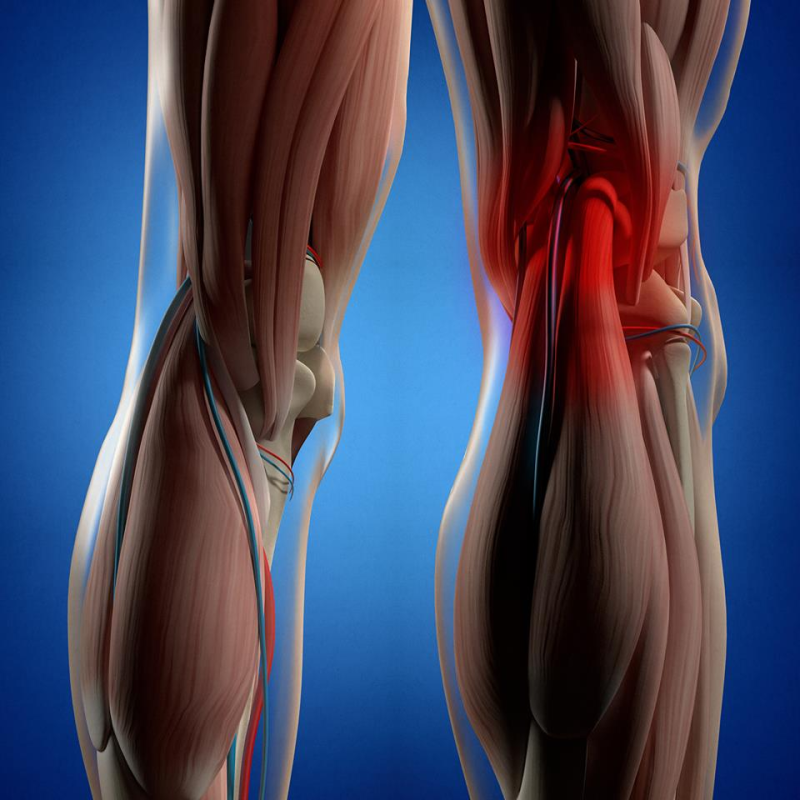
Motor Unit Recruitment
The nervous system controls muscle activation through motor unit recruitment. Understanding how this recruitment varies based on the type and intensity of activity is crucial for optimizing performance and rehabilitation strategies.
Future Directions: Emerging Research in Knee Muscle Function
As our understanding of knee muscle anatomy and function continues to evolve, new areas of research are emerging that promise to enhance our ability to treat knee conditions and optimize performance.
Genetic Factors in Muscle Function
Research into genetic variations that influence muscle fiber type composition and muscle performance characteristics may lead to more personalized approaches to training and rehabilitation.
Advanced Imaging Techniques
Developments in imaging technology, such as dynamic MRI and ultrasound elastography, are providing new insights into muscle function and pathology, allowing for more precise diagnosis and treatment planning.
The study of knee muscle anatomy and function is a rich and evolving field that intersects with various disciplines, from basic anatomy to advanced biomechanics and neuroscience. As our understanding deepens, we continue to refine our approaches to maintaining knee health, treating injuries, and optimizing performance across a wide range of activities and sports.
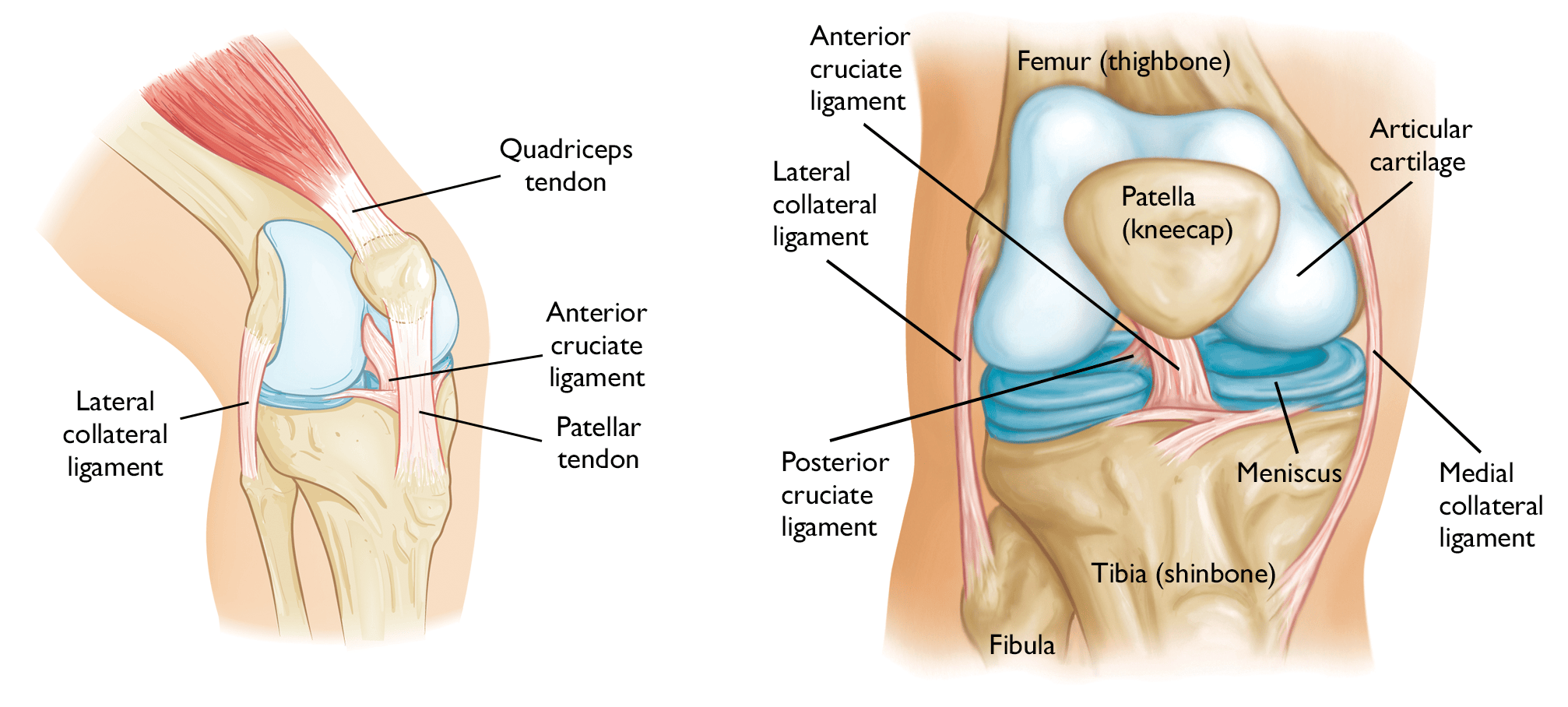
Learn Muscle Anatomy: Knee Joint Group
As I sit here, typing, I’ve got my legs crossed. My chiropractor would probably throw something at my head if he knew. Oh well. Is YOLO still a thing? Because YOLO.
Where my legs are crossed (at the knees) there are several muscles of the lower limbs in play. And of course there are—do you know how many anatomical structures it takes to move your knee? Probably more than you think.
Image from Muscle Premium.
Muscles of the Knee Joint
The muscles of the knee joint are incredibly important. They move when you do—when you walk, run, dance, stretch your legs, or make any action you can think of that involves bending the knees.
There are two muscle groups that act on the knee joint: the quadriceps femoris and the posterior compartment of the proximal leg. In addition to these groups are the plantaris, articulus genu, semiteninosus, semimembranosus, and popliteus.
Image from Muscle Premium.
Let’s take a look at the quadriceps femoris group.
Quadriceps Femoris Group
Muscle | Attachments | Actions |
Rectus femoris | Originates on the anterior inferior iliac spine and a groove superior to the acetabulum; inserts on the common tendon of the quadriceps enclosing the patella, and on the tibial tuberosity | Extension of the leg at the knee joint; flexion of the hip |
Vastus lateralis | Originates on the greater trochanter and upper lateral surface of the linea aspera; inserts on the patella via the quadriceps tendon, and the tibial tuberosity via the patellar ligament | Extension of the leg at the knee joint |
Vastus intermedius | Originates on the upper two-thirds of the anterior and lateral surfaces of the femur; inserts on the common tendon of the quadriceps enclosing the patella, and on the tibial tuberosity | Extension of the leg at the knee joint |
Vastus medialis | Originates on the intertrochanteric line and medial lip of the linea aspera; inserts on the common tendon of the quadriceps enclosing the patella, and on the tibial tuberosity | Extension of the leg at the knee joint |
Bursae
The body employs a bunch of different anatomical structures to keep friction down, and bursae are one of them.
Image from Muscle Premium.
Bursae are fluid-filled sacs that can be found anywhere skin rubs over bone, and where a muscle, ligament, or tendon glides directly over the periosteum (outer surface) of a bone. The synovial fluid in the bursae linings provides lubrication, enabling freedom of movement between contiguous connective tissue surfaces.
The bursae found in the knee include the superficial prepatellar, superficial and deep infrapatellar, medial and lateral gastrocnemius, suprapatellar, and quite a few more.
Knee Extension
So, I’m still sitting with one knee crossed over the other and somewhere my chiropractor just became flushed with rage and has no idea why. If I stand, however, I will be straightening, or extending, my knees.
Extension increases the angle between body parts. Flexion decreases the angle. Stand up for a moment and keep your legs perfectly straight—this is extension.
Video footage from Muscle Premium.
The angle is around 180 degrees. Now, stand on one leg and lift the other until it’s bent at the knee—this is flexion.
Video footage from Muscle Premium.
And now I’m going to give my chiropractor’s blood pressure a rest and put both my feet on the floor.
Be sure to subscribe to the Visible Body Blog for more anatomy awesomeness!
Are you a professor (or know someone who is)? We have awesome visuals and resources for your anatomy and physiology course! Learn more here.
Related Posts:
– Learn Muscle Anatomy: Serratus Posterior Superior and Inferior
– Learn Muscle Anatomy: Gastrocnemius
– Learn Muscle Anatomy: Scalenes
Muscles of the Knee – Anatomy Pictures and Information
The muscles of the knee include the quadriceps, hamstrings, and the muscles of the calf. These muscles work in groups to flex, extend and stabilize the knee joint. These motions of the knee allow the body to perform such important movements as walking, running, kicking, and jumping.
These motions of the knee allow the body to perform such important movements as walking, running, kicking, and jumping.
Extending along the anterior surface of the thigh are the four muscles of the quadriceps femoris group (vastus lateralis, vastus medialis, vastus intermedius, and rectus femoris). These large muscles originate in the ilium and femur and insert on the tibia. Continue Scrolling To Read More Below…
Click To View Large Image
Continued From Above…
Contraction of the quadriceps group extends the leg at the knee and flexes the thigh at the hip.
The hamstring muscle group extends across the posterior surface of the thigh from the ischium of the pelvis to the tibia of the lower leg. Three individual muscles form the hamstrings group: biceps femoris, semitendinosus, and semimembranosus. The hamstrings work together to flex the leg at the knee.
In the calf region of the leg, the gastrocnemius muscle extends from the distal end of the femur through the calcaneal (Achilles) tendon to the calcaneus of the heel. The gastrocnemius forms the posterior muscular wall of the knee and acts as a flexor of the knee and plantar flexor of the foot.
Some other muscles that assist with the movements of the knee include the tensor fasciae latae, popliteus and the articularis genus muscles. The tensor fasciae latae contracts the iliotibial band of fibrous connective tissue that helps to stabilize the femur, tibia, and thigh muscles. Flexion of the knee requires some slight rotation of the tibia, which is provided by the contraction of the popliteus muscle. The tiny articularis genus muscle elevates the suprapatellar bursa and capsule of the knee joint to prevent pinching of this soft tissue during extension of the leg at the knee.
Anatomy of the Knee | Arthritis Foundation
The knee is the joint where the bones of the lower and upper legs meet. The largest joint in the body, the knee moves like a hinge, allowing you to sit, squat, walk or jump.
The largest joint in the body, the knee moves like a hinge, allowing you to sit, squat, walk or jump.
The knee consists of three bones:
- femur – the upper leg bone, or thigh bone
- tibia – the bone at the front of the lower leg, or shin bone
- patella – the thick, triangular bone that sits over the other bones at the front of the knee, or kneecap.
The ends of the bones are covered with a layer of cartilage, a slick, elastic material that absorbs shock and allows the bones to glide easily against one another as they move.
Between the tibia and femur bone are two crescent-shaped pads of cartilage that reduce friction and disperse the weight of the body across the joint. They are:
- The lateral meniscus, situated at the outside of the knee.
- The medial meniscus, situated on the inside of the knee.
The bones are held together by a joint capsule, which consists of two distinct layers – an outer layer of dense connective tissue and an inner membrane, called the synovium, which secretes a fluid to lubricate the joint.
The outer layer of the capsule is attached to the ends of the bones and is supported by these ligaments and tendons:
- quadriceps tendon, which attaches the quadriceps to the patella
- medial collateral ligament (MCL), which gives stability to the inner part of the knee
- lateral collateral ligament (LCL), which stabilizes the outer part of the knee
- anterior cruciate ligament (ACL), which is located in the center of the knee and prevents excessive forward movement of the tibia
- posterior cruciate ligament (PCL), which is located in the center of the knee and prevents excessive backward shifting of the knee.
Two groups of muscles support the knee. They are:
- Hamstrings – muscles on the back of the thigh, which run from the hip to just below the knee and work to bend the knee.
- Quadriceps – four muscles on front of the thigh that run from the hip to the knee and straighten the knee from a bent position.

OhioDance | Knee Anatomy
Bones
The knee is composed of four bones that make up three separate joints, which work together to allow movement through various positions in dance.
These four bones are the Femur (thigh bone), Tibia (shin bone), Patella (knee cap), and fibula.
Joints
The femur and tibia articulate to form the tibiofemoral joint, which is the main “hinge” joint of the knee.
The patella and femur create the patellofemoral joint. The patella sits in a groove along the front of the femur, and glides through the groove as the knee bends and straightens. If the patella does not glide smoothly in this groove on the femur for various reasons, pain and injury can result (see below).
The tibia and fibula make two joints, one at the outside of the knee (the proximal tibiofibular joint), and one at the ankle (the distal tibiofibular joint). These joints connect the motions of the knee and ankle, and the fibula slides forward and backward as the knee bends and straightens.
These joints connect the motions of the knee and ankle, and the fibula slides forward and backward as the knee bends and straightens.
Muscles
The quadriceps are the muscles on the front of the thigh. This muscle group is composed of the vastus lateralis (outside), vastus medialis (inside), vastus intermedius (underneath), and rectus femoris (on top). All four parts connect into one tendon that encases the patella. This tendon continues below the patella to connect to the tibia. These muscles extend, or straighten, the knee.
The hamstrings are the muscles on the back of the thigh. This muscle group is composed of the biceps femoris (outside), the semimembranosus, and the semitendinosus (inside). All three begin at one common tendon attached to the ischial tuberosity of the pelvis (sit bones). The semimembranosus and semitendinosus connect to the tibia on the inside of the leg, and the biceps femoris connects to the top of the fibula on the outside of the leg. These muscles flex, or bend, the knee.
These muscles flex, or bend, the knee.
The popliteus is a muscle that runs diagonally across the back of the knee, underneath the hamstrings, from the lateral femur to the medial tibia. Its function is to “unlock” the knee by providing slight rotation at the knee as it moves between flexion and extension.
The gastrocnemius is one of the calf muscles, but attaches to the femur at the back of the knee, and runs down to attach to the calcaneus (heel bone) through the achilles tendon. It acts as a secondary knee flexor.
Iliotibial Band
The iliotibial band, often referred to as the “IT Band” is a long band of fascia that begins at the hip, and runs down along the outside of the thigh to attach to the tibia below the knee. It also acts as a stabilizer for the lateral (outside) aspect of the knee. When the IT Band becomes excessively tight, knee pain and injury may occur (see below).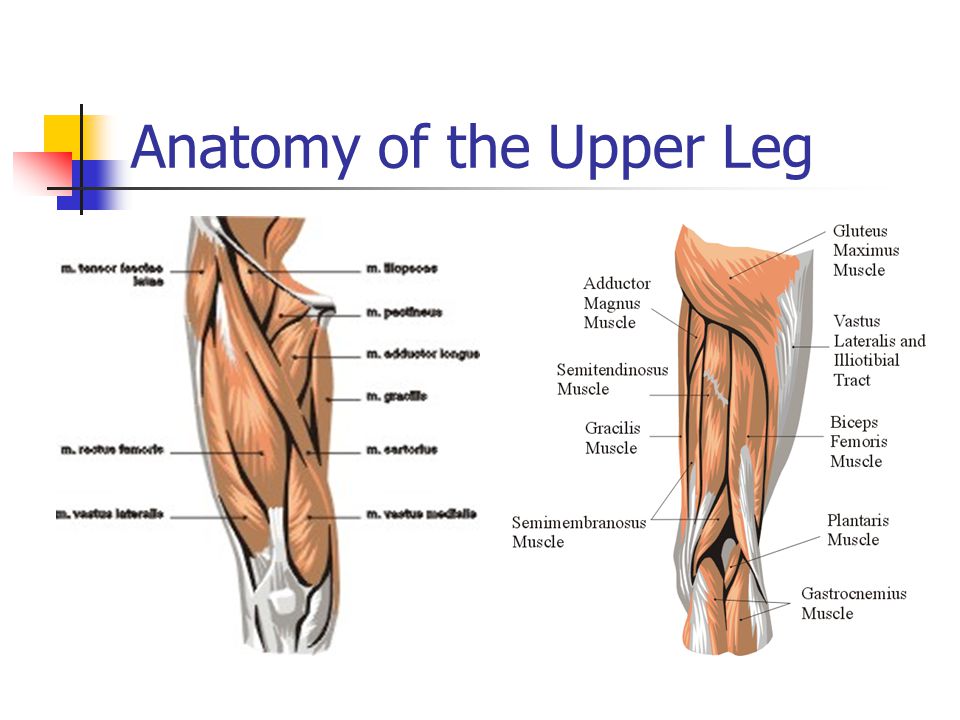
Ligaments
Cruciate Ligaments:
These ligaments act as knee stabilizers and restrict how much the tibia and femur can slide on each other. They create a cross or an “X” deep inside the knee, and are named for where they attach on the tibia. The Anterior Cruciate Ligament (ACL) runs from the front of the tibia to the back of the femur, and the Posterior Cruciate Ligament (PCL) runs from the back of the tibia to the front of the femur.
Collateral Ligaments:
The collateral ligaments run along the inside and outside of the knee from the femur to the tibia. These ligaments stabilize the knee and protect it from sideways forces. The Medial Collateral Ligament (MCL) runs from the inside of the tibia to the inside of the femur, and the Lateral Collateral Ligament (LCL) runs from the outside of the femur to the top of the fibula.
Menisci
The menisci (plural of meniscus) are fibrocartilage rings that sit on top of the tibia, and stabilize the knee as well as act to cushion the knee from the forces placed upon it and through it while dancing. The medial meniscus is “C” shaped, and solidly attached to the tibia, while the lateral meniscus is “O” shaped, and is slightly more mobile.
The medial meniscus is “C” shaped, and solidly attached to the tibia, while the lateral meniscus is “O” shaped, and is slightly more mobile.
Resources
Author unknown. Knee Pain Health Center. Last updated 2012. Available at http://www.webmd.com/pain-management/knee-pain/picture-of-the-knee. Accessed December 17, 2012.
Author unknown. Medical Look: Your Medical World. Last updated 2012. Available at http://www.medicalook.com/human_anatomy/organs/Muscles_involved_in_knee_motion.html. Accessed December 17, 2012.
Author unknown. Nucleus Medical Media. Last updated 2007. Available at http://pages.uoregon.edu/esorens1/hphy362.pbwiki.com/Knee+Musculature.html Accessed December 17, 2012.
Author unknown. Achieve Therapy and Fitness. Last updated 2011. Available at Accessed December 17, 2012.
Author unknown. Medchrome: Medical and Health Articles. The Anatomy of Knee Joint. Last updated 2012. Available at . Accessed December 17, 2012.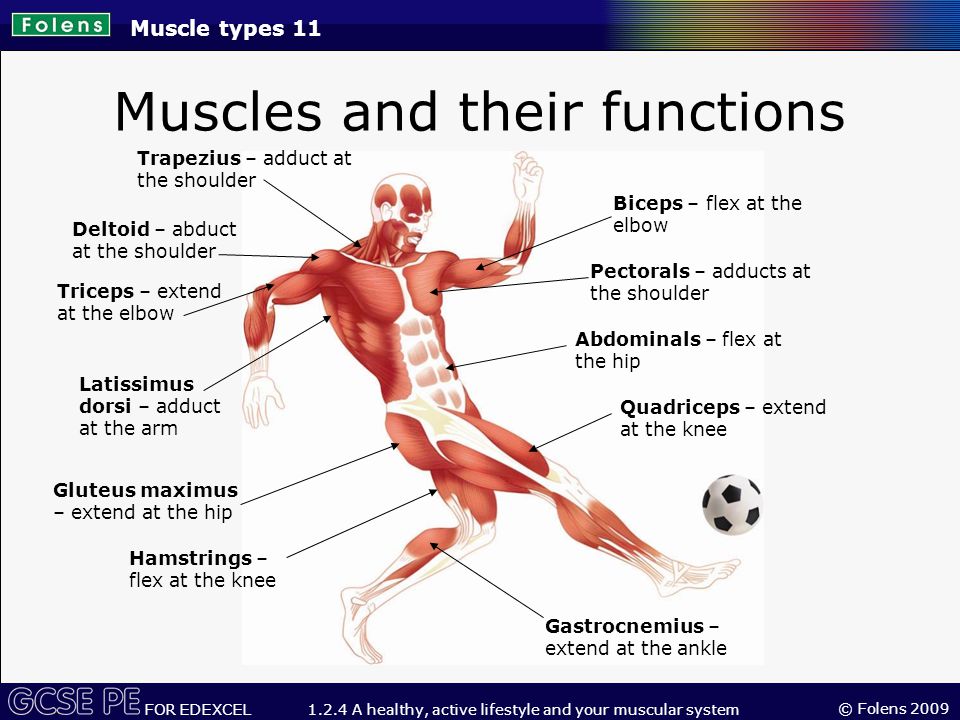
Return to top
Knee Strain or Sprain | Orthopedics
Causes of a knee strain or sprain
- Injuries — trauma, sports injuries or falls that overstretch the joints and soft tissue that surround the knee and cause a knee sprain or strain.
- Overuse — building up too quickly in a sport, such as running, can overwhelm the body and lead to knee strains or sprains.
- Muscle weakness — muscles that can’t support the knee joints can cause a knee strain or sprain.
- Reduced flexibility — tight muscles can restrict joint motion and lead to functional weaknesses at the knee joint to cause a knee strain or sprain.
- Running form — overpronating when running or walking can increase stress to the knee and cause a knee strain or sprain.
Risk factors for a knee strain or sprain
- Contact sports — participating in contact sports such as football, basketball and soccer put you at a higher risk for knee sprains or strains.

- Prior knee strains or sprains — prior sprains or strains to the knee make you more likely to suffer another knee sprain or strain.
- Improper footwear — wearing improper footwear can put additional pressure on the knee joint and cause a knee strain or sprain.
Symptoms of a knee strain or sprain
- Pain and tenderness in the knee
- Stiffness, bruising and swelling in the knee
- Instability when walking
- Popping noise when injured
Diagnosis of a knee strain or sprain
Diagnosing a knee sprain or strain is challenging due to the complexity of the knee. Your physician will perform a variety of physical tests, as well as take a full medical history, to determine the exact cause and location of the injury.
A patient could have multiple knee injuries at one time, so your doctor may order an x-ray or MRI. These imaging modalities will be able to identify what is causing the symptoms and help the provider determine the best treatment for your case.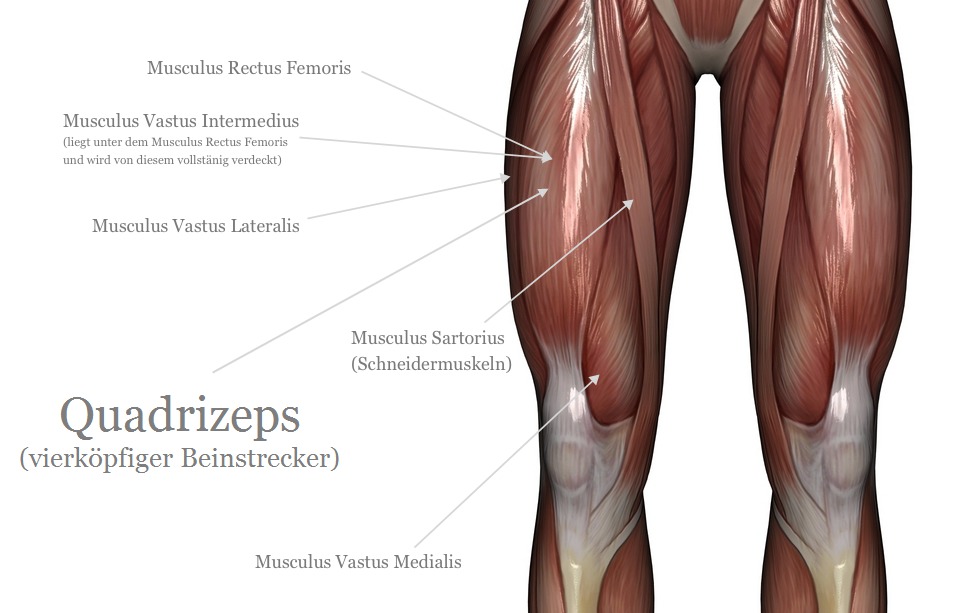
Treatment for a knee strain or sprain
Many patients can self-treat knee strain or sprain with rest, ice, compression, elevation and anti-inflammatory medication. If the pain is moderate to severe, your physician may require you to wear a brace over the knee to provide stability. More advanced knee strains or sprains can be treated with the following treatments:
- Physical therapy and rehabilitation — physical therapy is crucial to help strengthen the knee after a strain or sprain; your physical therapist will work with you to gradually add exercises that will help restore mobility in the knee.
- PRP therapy (Platelet-rich plasma) — PRP therapy for knee strains or sprains is a newer therapy where your orthopedic physician will remove a blood sample from the patient, put the blood in a centrifuge to separate out the platelets (which contain growth factors that are important in healing injuries) and then inject them back into the patient at the affected site in the knee.

Recovery from a knee strain or sprain
It is important to work with your physician closely before you return to your everyday routine. When recovered, you should be able to perform simple exercises such as squatting, running, side to side motions and jumping without pain.
A mild sprain is healed after six weeks of resting and treating the knee. A severe strain or sprain can take as long as three to four months. The exact recovery time will depend on the treatment plan that your doctor and physical therapist recommend for you as well as the nature of the injury.
Knee – Bones, Ligaments, Muscles & Conditions | Twin Boro Physical Therapy
The knee is the largest joint in the body. It is built for weight bearing, stability and mobility. The knee complex is composed of four bones and three osseous bone-to-bone joints. These are the patellafemoral joint, tibiofemoral joint, and the tibiofibular joint.
When the knee is in its fully extended position it depends on its ligaments, meniscus, and mechanical screw home mechanism for stability. When it is in the bent position it is unstable but allows for movement in several planes.
When it is in the bent position it is unstable but allows for movement in several planes.
Bone and Joint
The tibiofemoral joint is a hinge joint, located between the largest bone in the body (the femur) and the larges bone in the lower leg (the tibia.) These two bones are joined together and form a medial and lateral compartment.
The second joint in the knee complex is located between the patella (knee cap) and the femur. The patella glides up and down a groove on the anterior distal aspect of the femur called the patellofemoral joint.
There is also a joint between the small lateral bone of the lower leg (fibula) and the larger tibia.
The osseous joint surface all have articular cartilage that covers the ends of the bones. The articular cartilage has a smooth and shiny surface, which allows the ends of the bones to slide freely over each other.
Common conditions of these joints include knee osteoarthritis, rheumatoid arthritis, tibial plateau fractures, patellofemoral syndrome, degenerative joint disease and chondromalacia.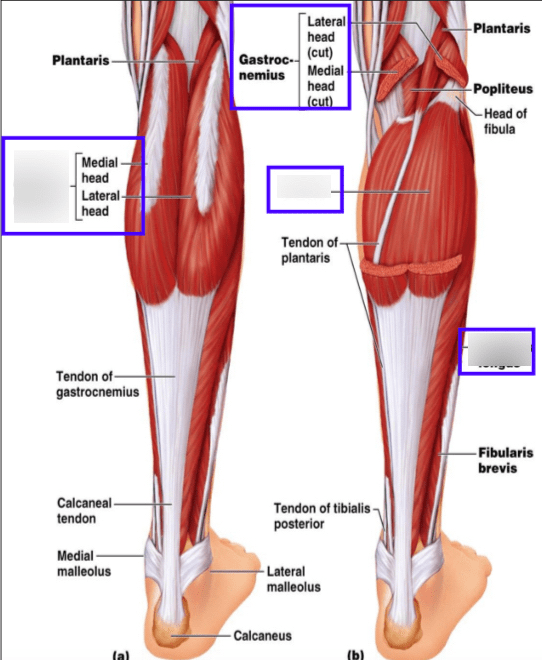
Muscles
The muscles surrounding the knee function to both move and stabilize the joint. The two main muscle groups are the quadriceps on the anterior side of the knee and femur, and the hamstrings on the posterior side.
The four muscles of the quadriceps: vastus lateralus, vastus medialus, vastus intermedius and rectus femoris function to extend the knee. The muscles join together to form the common quadriceps tendon. Tendons are part of the muscle, and attach muscle to bone. Within the quadriceps tendon is the patella (knee cap.) The patella is a sesamoid bone, which provides increased leverage to the quadriceps muscle to improve its efficiency.
The three posterior hamstring muscles: biceps femoris, semitendinosis, and semimembranosis function to decelerate, stabilize and bend the knee joint, and attach to the posterior part of the tibia and fibula.
There are two other important muscles of the knee complex. The gastrocnemius pushes the foot down (plantar flexes) and helps bend the knee. The popliteus helps unlock the knee from a straightened or extended position. Two adductor muscles, the adductor magnus and gracilis, cross the knee joint and help rotate the leg and can be a source of inflammation.
The popliteus helps unlock the knee from a straightened or extended position. Two adductor muscles, the adductor magnus and gracilis, cross the knee joint and help rotate the leg and can be a source of inflammation.
Common conditions of the muscles and tendon of the knee include patella tendinitis, ruptured quadriceps tendon, quadriceps strain, hamstring strain, torn hamstring, muscle strain, gastrocnemius tear and gastrocnemius strain.
Ligaments and Meniscus
Ligaments are soft tissue structures that attach bone to bone. The primary job of a ligament is to provide stability to a joint. There are four main ligaments of the knee.
Located on the inner aspect of the knee is the medial collateral (MCL) ligament, and on the outside is the lateral collateral ligament (LCL). These ligaments provide medial and lateral stability to the knee.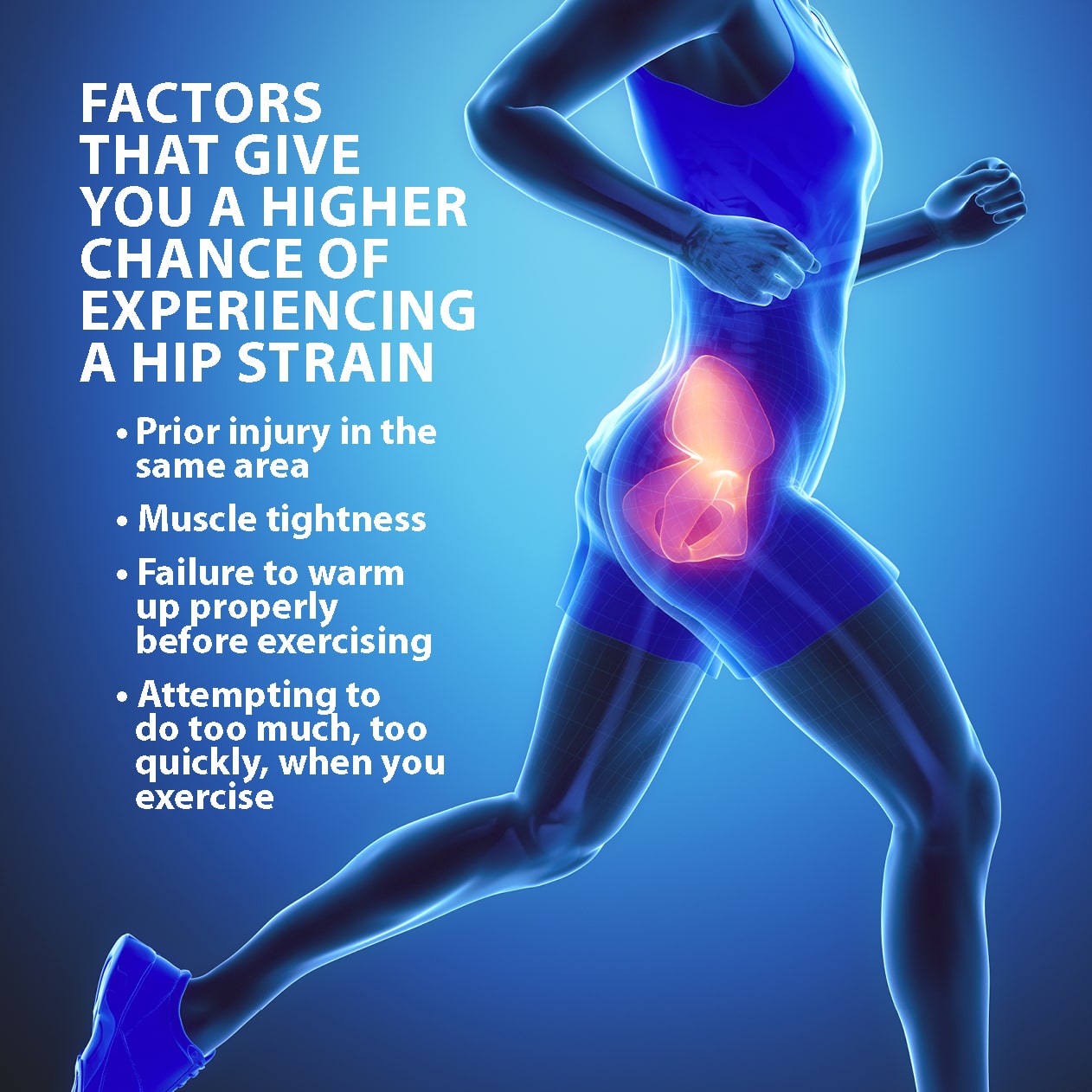
Located on the inside of the knee are the anterior cruciate ligament (ACL), and posterior cruciate ligament (PCL). They provide anterior, posterior and rotatory stability to the knee.
Two other soft tissue structures within the knee are the medial and lateral meniscus. These structures are attached to the tibia, and provide added stability and cushioning to the knee joint. They are cartilaginous in nature and when injured can be referred to as a “torn cartilage”.
Common conditions for this aspect of the knee include ACL tear, ACL insufficiency, PCL tear, medial meniscus tear, lateral meniscus tear, meniscus tear, unhappy triad, meniscectomy, ACL reconstruction and PCL reconstruction.
Bursa
A bursa is a fluid filled sac that decreases friction between two tissues.The knee is surrounded by several bursa.The largest bursa in the body is the suprapatella bursa and will often fill with fluid when the knee is injured.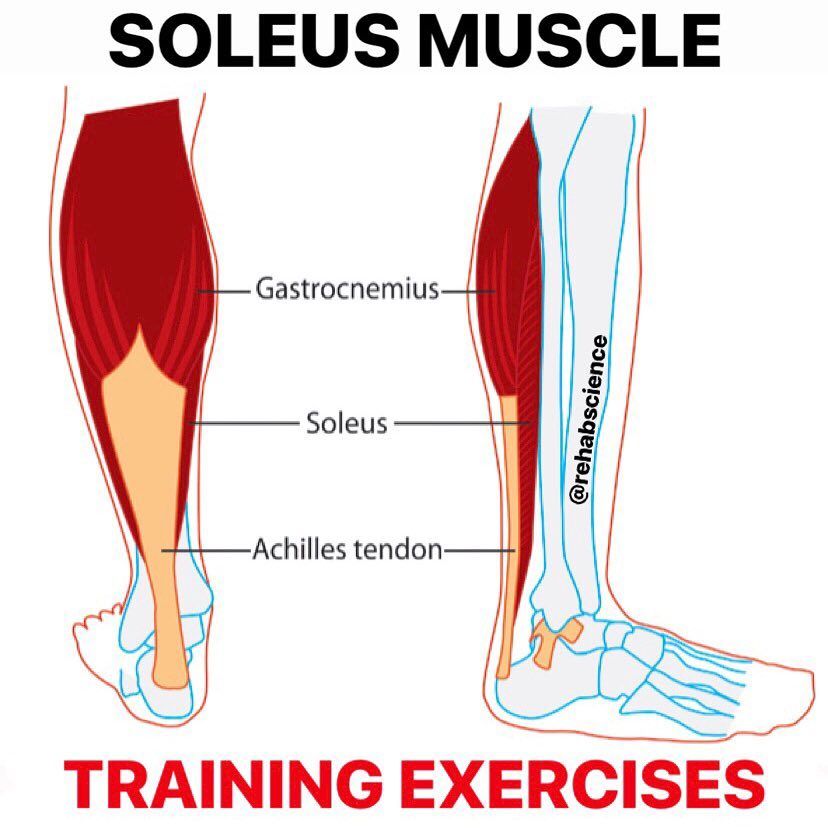 This may be referred to as “water on the knee”.
This may be referred to as “water on the knee”.
The most commonly injured bursa are the prepatella bursa, which is in front of the patella and the pes anserinus bursa, which is located at insertion of the three medial muscles of the knee.
Common conditions of the bursa include prepatella bursitis, pes anserinus bursitis, “fluid on the knee”.
Visit our YouTube channel for more informational videos!
Knee Injuries (for Teens) – Nemours KidsHealth
The knee is a joint that joins the thigh bone (femur) to the top of the shin bone (tibia). It is made up of bones,
cartilage, muscles,
ligaments, and tendons.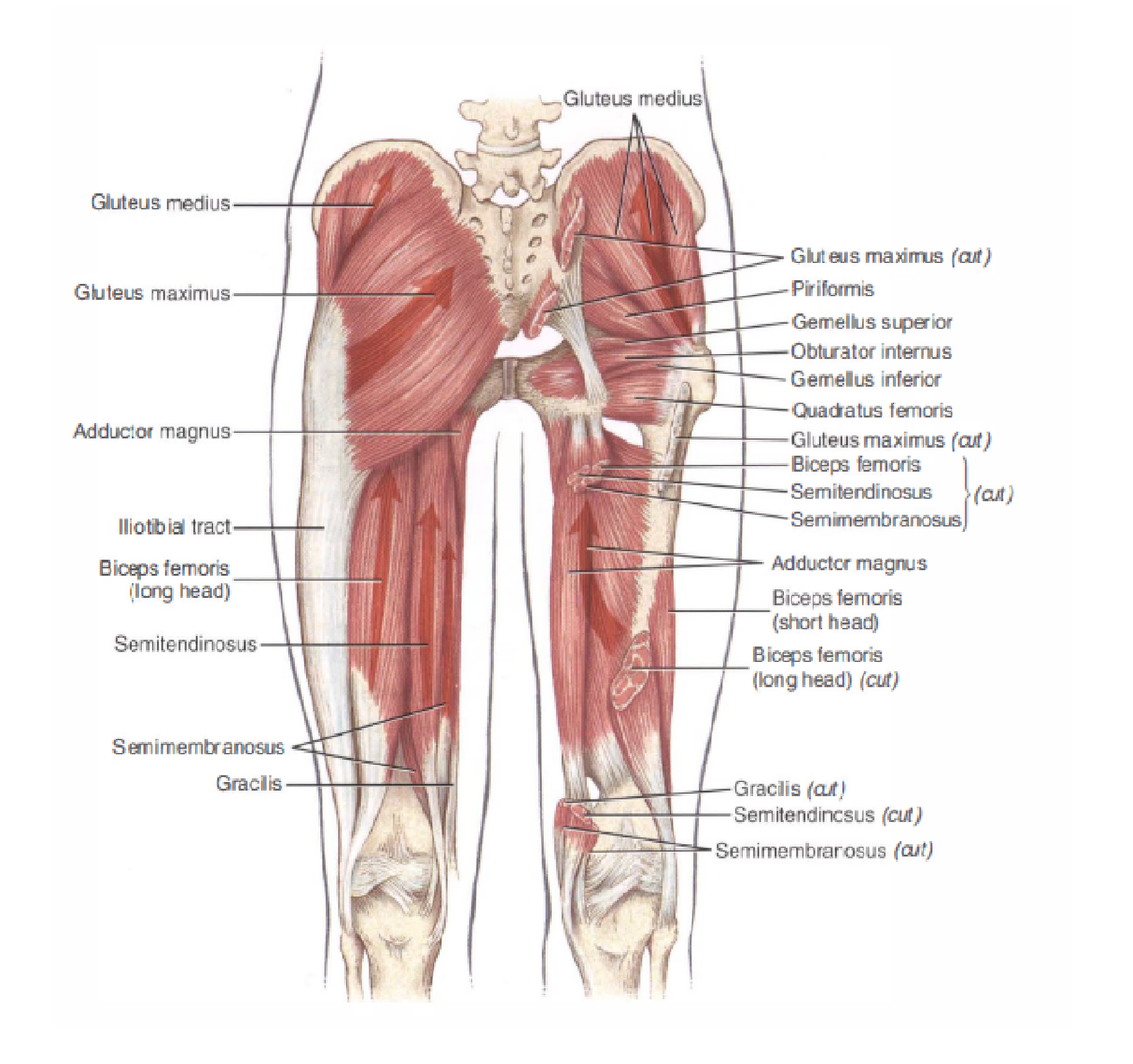 These parts work together to make the legs bend, straighten, and swivel. A knee injury can damage one or more parts of the knee.
These parts work together to make the legs bend, straighten, and swivel. A knee injury can damage one or more parts of the knee.
What Causes Knee Injuries?
Teens may injure a knee in a fall or accident. Active and athletic teens might have overuse knee injuries. These happen when someone trains too much or makes repetitive motions involving the knee.
Common knee injuries in teens include:
- sprains: when a ligament stretches or tears; for example, an anterior cruciate ligament (ACL) or medial collateral ligament (MCL) tear
- strains: when a muscle or tendon tears part or all of the way
- tendonitis: when a tendon gets irritated or inflamed, usually from overuse or poor training (for example, in jumper’s knee)
- meniscal tears: when the cartilage between the upper and lower leg bones (the menisci) tears
- fractures: when a bone breaks
- dislocation of the patella (kneecap): when the kneecap slides out of place
- Osgood-Schlatter disease:
inflammationof the tendon that attaches the kneecap to the shinbone - Osteochondritis dissecans: when a small piece of bone in the knee loses blood supply and breaks off
- bursitis: swelling of one of the fluid filled sacs that cushion the knee.

What Are the Signs & Symptoms of a Knee Injury?
The signs and symptoms of a knee injury depend on the cause. Most knee injuries cause pain. A knee injury may also lead to the knee feeling weak, “giving way,” or “locking.” Someone with a knee injury might not be able to fully bend or straighten the knee. The injured knee may be swollen or bruised.
How Are Knee Injuries Diagnosed?
To diagnose a knee injury, health care providers ask about how the injury happened and what symptoms it causes.
The health care provider will do a physical exam that includes pressing on the knee and legs and moving them in certain ways. These tests can show what part of the knee is injured.
Imaging tests done sometimes used include:
- X-rays to check for injuries to the bones
- a CT scan or MRI to look inside the knee
How Are Knee Injuries Treated?
Treatment for a knee injury depends on the cause. Some knee injuries just need RICE:
- Rest
- Ice
- Compression (with an elastic bandage)
- Elevation (raising the injured knee)
Other knee injuries may need bracing, physical therapy, or even surgery.
Can Knee Injuries Be Prevented?
To help prevent knee injuries:
- Be sure you wear the recommended protective equipment for sports (such as knee pads and shin guards).
- Wear supportive athletic shoes that are in good condition.
- During workouts, always warm up and cool down.
- Do regular strength training to support muscles, and stretching or yoga to improve flexibility.
- When jumping, bend the knees while landing. This takes pressure off the ACL and prevents injury.
- If you cut laterally or pivot frequently (as in soccer), crouch and bend at the knees and hips to reduce the chances of an ACL injury.
- If you play just one sport, conditioning and training year-round — even if it’s at a lower intensity than during the competitive season — can help you stay in shape and make an injury less likely.
What Else Should I Know?
If your knee hurts, it is important to know why. Go to a health care provider to find out what’s causing the pain and to get treatment.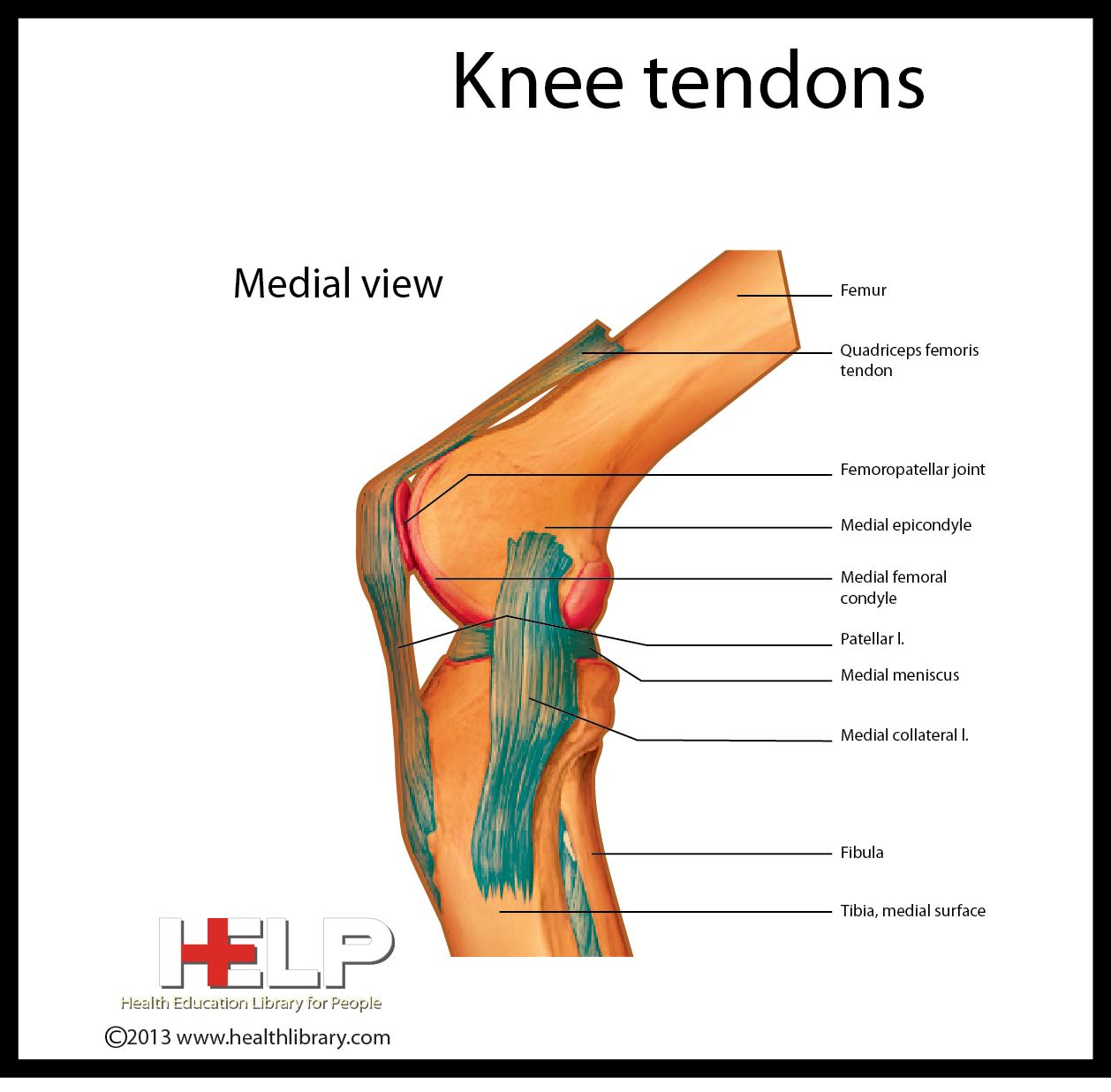
90,000 How to avoid injury and knee pain?
Knees have a hard time. The focus is always on the other parts of the legs, while the knees work tirelessly to absorb impacts and deal with the constant shock of walking, running, jumping, squatting, stretching, turning and climbing. However, a growing number of women are beginning to realize that knees can be the weak link in their own body. In Russia, about 400 thousand torn ligaments of the knee joint are registered a year – this is only the official statistics of this type of injury.Experts are convinced that in fact there are many injuries – three to four times – more, but most of the victims do not even go to the doctor. But in vain. If, during a fall or blow, the cruciate complex – a ligament in the form of an oblique cross that connects the thigh and lower leg – suffered, the consequences can be very serious, up to and including disability. Knee injuries are common in sports and dance professionals and are one of the most common ski injuries.
Both men and women suffer from rupture and tear of ligaments, but it is the “weaker sex” that is more susceptible to this injury.According to world statistics, women are 5 times more likely to get a ruptured knee ligament than men, women also have a higher risk of knee pain. “Women are more prone to this injury,” comments Joe Hannafer, Ph.D., podiatrist, director of the Women’s Sports Medical Center at New York Hospital. But that doesn’t mean that many knee injuries cannot be prevented.
Test yourself Before jumping, rollerblading, jogging or if you are going to the ski slope, in short, before any serious stress on your knees, check your own level of fitness.
Lean with your back against the wall, feet shoulder-width apart, approximately 45-50 cm from the wall. Slowly lower yourself down until your thighs are parallel to the floor. Hold this position and slowly climb back up. Your back should be pressed against the wall. If you cannot repeat this exercise 12 times without discomfort and crunching in your knees, your knees need additional training, they are not ready for a heavy load. If so, it is imperative to seriously “swing your legs” and work on the stretch.If you have had previous knee or ligament injuries, be extremely careful.
Weak link.
The knees are our weakness primarily because of their structure and structure. The knee connects the two longest bones in the human body with a complex system of ligaments, muscles and a unique “shock-absorbing system”. This complex structure is responsible for our every movement of our legs, be it walking, running, jumping and everything else. But sometimes the knees are unable to withstand the load, and problems arise.
Anatomy and physiology are to blame for this. Compared to men, women have a wider and heavier lower body (the Americans coined the term “center of the mmm … ass” to refer to this politically incorrect situation. The structural features of the female body can often cause excessive tension in the muscles of the hips and knees, making them More susceptible to injury Some studies also show estrogen levels have an effect on ligament elasticity And, breaking news, high heels and tight shoes are not conducive to healthy knees.All together can ultimately lead to loss of knee stability and injury. Everything you just read does not mean that next week you have to make an appointment with the surgeon and queue up for meniscus surgery. However, if every morning or any visit to the mountains begins with a steady crunching and grinding in the knees, it is still better to consult a doctor. Either way, prevention and some simple exercises will help protect your knees and prepare them to face the slope.
10 ways of protection. 1. Stretch regularly and incorporate leg and knee exercises into your exercise plan. If you ignored fitness centers, start exercising your knees and legs at least in early fall, a few months before the start of the season.
2. Do not forget to warm up and warm up your muscles before any serious load – be it tennis, running, skiing or anything else. It is ideal to start any workout with walking or a short, slow jog. Then you can practice the movements typical of the selected sport at a slow pace.
3. Try to follow the “10% rule”: do not increase the load or distance by more than 10 percent per week. If you run 10 km this week, you can increase the distance to 11 km next week, but not 15 km.
4. Carefully start new sports / outdoor activities. In the gym, do not get carried away with exercises in which the maximum load is on the knees. If you are tired or uncomfortable, reduce the exertion.
5.Choose loose shoes. For training, it is better to choose shoes not in the markets, but in large specialized stores. Seek advice from a competent seller: different types of sports require different sneakers and shoes. If you decide to play tennis, you will need tennis shoes, regular running shoes are not suitable for this purpose. Do not forget to periodically change your shoes (if you are running, this should be done approximately every 300-350 km). Appearance is not an indicator, the shoe may look normal, while its cushioning properties have long been lost.Try not to wear high heels all the time.
6. Variety. Too much good is bad. Therefore, try to diversify your activities – combine jogging with swimming, skiing with classes in a fitness center, etc.
7. During exercise, try not to squat too deep and bend your knees too much. Be attentive to the recommendations of the trainer, and if you feel pain during training, stop it and consult a specialist.
8. Avoid running on hard surfaces whenever possible. It is best to run on the ground, paths and grass.
9. Pay attention to the even development of the leg muscles – it is the imbalance in muscle development that can often contribute to injury. Quite often, women have strong quads and weak hamstrings.
10. Calm, only calm. Do not immediately strive for the highest possible load for you. Even a slight “overweight” with certain exercises can greatly negatively affect the condition of your knees.
Grazing.
Mark Sterger, therapist and nutritionist, author of a number of famous books on naturopathy and nutrition, believes that what we eat and drink directly affects the health of our joints and knees in particular.
His advice: – Eat foods that are high in mono- and polyunsaturated fatty acids and low in saturated. Special attention should be paid to such varieties of polyunsaturated fatty acids as “omega-3” and “omega-6”, which are found in the organisms of Arctic fish (salmon, sardines).Include walnuts and various seeds in your diet (flaxseed is especially useful). All of this helps our knees stay flexible and resist injury. Research also shows that these fatty acids are good for the heart and brain as well, so don’t forget tuna, salmon, carp, and other fish.
– Include in your diet a complex multivitamin with antioxidants. A diet rich in fresh fruits, vegetables, and whole grains is the best way to get the antioxidants the body needs and to prevent cartilage degeneration.
– Drink more water. Adequate fluid levels are essential for the health of the cartilage, especially the knees. Don’t forget about the water in the mountains – in cold weather you may not be thirsty, but it is extremely important to maintain optimal fluid levels in the body. Drink at least a liter and a half of drinking water. In the mountains, the need for fluid increases.
– Limit your intake of caffeine, alcohol and cigarettes. If you have knee problems, try to stop smoking and drinking altogether.All of these habits delay recovery and increase the risk of serious injury.
– Be skeptical about additives. Many nutritional supplements are advertised as being almost essential for health. In particular, tablets containing glucosamine are often suggested for tissue strengthening, but they only help with osteoarthritis and not other types of arthritis and knee injuries.
For the hostess, a tip: A frozen bag of peas is a fairly convenient and practical way to reduce knee pain and swelling.
Knee-dangerous sports: basketball, football, skiing, volleyball.
May contribute to chronic injury: long distance running, steppers, training with improper weights, strength training in poor physical condition.
Ambulance.
If you experience knee pain, stop immediately and rest if possible. Taking a break will help the pain go away. A swollen knee can be treated with ice or something cold for 20 minutes every 3 hours.Massaging the muscles of the thigh and lower leg, swimming, rubbing with regular menovasin, Dolgit ointments or Fastup gel can relieve the condition if it is not caused by serious injury. Celebrex, arthrotek or ketonal can quickly relieve pain (be careful – like many painkillers, these drugs have contraindications). If the discomfort does not stop within a few days, and any even small load is caused by crunching and pain, be sure to visit a specialist. If you suspect a knee injury, it is very swollen and / or the pain is very sharp and severe, do not wait, see a doctor immediately.
Tearing?
Great skiers have little in common with famous basketball players. But both of them are often prone to tears and tears of the ligaments – an injury that is difficult and long to heal, and causes severe pain. Unfortunately, such injuries are private companions of professional sports. Alas, there are no golden rules for 100% prevention of rupture of ligaments – they are most often caused by a combination of a strong load with sharp falls and twisting of the leg (during a fall at a high speed, the ligaments of alpine skiers experience colossal overloads and often do not withstand.In any case, stretching, strengthening muscles, and proper warm-up can protect against serious injury to some extent. If you jump while rolling, learn to land properly, with your knees bent. If you ride all day, do not forget to rest, drink something hot in the middle of the day or in the late afternoon. Experts say that most serious knee injuries occur on the slopes at the end of the day, when both body and brain are tired. Experienced skiers are also advised to be extremely careful in the early days in the “big mountains”.Take care of yourself and your feet – they will still come in handy.
“I woke up during surgery and shouted that everything was fine with my knee”
The defender of the Russian national team and CSKA Moscow spoke about recovering from a knee injury, being in quarantine, new championship teams and the development of women’s football.
– Ksenia, last year you were recovering from a difficult spinal surgery. Just started playing – and again a serious injury.
– Yes, the black streak is on.I suffered for a long time with my back, I played through pain for a year. Three rounds before the end of the Championship, she performed an operation, recovered in 3 months. After I healed my spine, I was just happy: I really wanted to play. Received a call to the Russian national team for the EURO qualifying match against Kosovo, trained with great desire, and … In training, during the two-sided fight, I went into a fight, my knee went to the side.
– Did you realize right away that everything is serious?
– The fact of the matter is that no! I was even able to continue playing, but then I felt that my knee was not holding, and the doctor said to take a break.She looked at the knee – it’s stable. But still we decided to play it safe, went to a local clinic. There, too, they twisted their leg – everything seemed to be fine, well, the maximum was lateral. I was delighted, decided that I got off with a slight fright. And how they did the MRI – they were horrified: there is a cross and a meniscus. And on examination in Moscow, the side was also confirmed. To say that I was in shock is to say nothing. There weren’t even thoughts in my head, just the question “Why?” and “For what?” But I am a strong girl, I quickly pulled myself together.I immediately set myself up to be positive and at the same time to serious work. The very next day I came to the gym, did a series of special exercises.
– How was the operation?
– In fact, there were some adventures. I had eight operations and always tolerated anesthesia normally. There were no glitches, no paddocks, nothing like that. Usually I walk away quickly, wake up as if nothing had happened, I feel normal. And this time I woke up, and I have such a memory in my head that I woke up on the operating table.The doctor came the next day, and for the sake of interest I decided to clarify with him whether this was or it seemed to me. He says to me: “Yes, when I sewed you up, you woke up, started pulling out your leg, saying that you have a normal knee, that you shouldn’t touch you.” It seems to me that all this happened due to the fact that my brain was already refusing to accept new trauma. And I also wondered why, when I woke up, my knee hurt terribly. I immediately say: “Give me something, I can’t stand it!” They put me on painkillers, it became easier.Still, the next two nights were terrible. I could not sleep because of the severe pain.
– It turns out that at first you were lying motionless?
– No, on the contrary. The doctor came and said to raise my leg. And this, in theory, is very difficult to do after such an operation, since the muscles leave, and the head does not yet understand that this is your leg. But you need to raise it. In general, the doctor asked if I could? I answered: “Yes, easy!” He: “What are you talking about here? Our wrestlers can’t lift their legs.” I pick it up and pick it up – the doctor is shocked.
– I wonder what the secret is?
– I prepared my muscles very well before the operation. I didn’t get it done right away, almost a month later. At first I was psychotic, I did not understand why I wasted two or three weeks. But I was assured that it would be much easier later. I accepted it, decided to trust and do as I was told. I intensively pumped my leg, gained muscle mass on it. It turned out that all this was not in vain: after the operation, all the work is easier for me. But at the same time, I’m not going to force things.It is clear that we can run ahead of the locomotive, but we need to be very careful.
– Nevertheless, you posted a video on Instagram, where the very next day after the operation, the abs and back were shaking.
– Here’s the catch. In no case should I drop my operated back, otherwise I will pump out even more. I had to look for some way out, do something so that everything was not completely sad.
– You also posted a video of playing with a ball on crutches.
– Yes, that was the day I was discharged. A friend came to my house to help. She cooked, I decided to walk on crutches. I saw the ball – and could not pass by, and my friend began to take pictures of me on the phone and pin up. Says: “Yes, calm down, leave this ball, patient!”. And I told her: “Yes, I can’t live without him, you don’t understand anything!” I’m like a drug addict – I am addicted to the ball.
***
– None of your relatives and friends told you after your injury: “Everything, is it time to finish?”
– Yes, it was.One footballer wrote to me: “Ksyu, they tell you from above that that’s enough.” I read it, sighed, exhaled, smiled and wrote in response: “Thank you, no.” I met another football player after the operation, and she asked if I would continue. Says: “Why do you need this? After all, you will not be lost, you will find yourself in life.” I say: “No, I can’t quit! After the operation, I can’t go past the ball, but how can I even tie up with football? Seriously ?!” It was not for this that I underwent eight surgeries to just give up like this.
– Is there something in life for which you would quit football?
– I understand, if I got pregnant in the future, there are no questions. Family is more important than football. Although I would still like to return to the field after the birth of the child. If I have a dilemma “health or football”, I will of course choose health, I have more children to give birth. But to quit out of the blue because of a sports injury is no way.
– Did anyone of the football players who already had cruciate ligament surgery seek advice?
– Yes, I talked with Andrey Yeshchenko, with Artem Rebrov.They were both shocked: “How so, you just recovered, and here again?” But in fact, this happens to everyone. The same Rebrov tore the cross, went out and tore the second. Yeshchenko also had a relapse, and then he recovered in four months. The same Nastyukha Pozdeeva twice operated on the cruciate ligament and nothing, came back, plays. So there is nothing wrong with that, you just need to get through the situation. By the way, I promised Yeshchenko that I would break his recovery record.
– You are very positive.How do you do it? Many people in much less difficult situations begin to complain about life, fall into depression.
– I could have been depressed before too, crying at fate. But everything changed after one story. I went to my parents’ home in Novokuznetsk and for some time trained there in the gym with the disabled. They were so cheerful – they joked, smiled, they were completely positive. And I looked at them and thought: “Damn, you have arms, you have legs, your injury is temporary, and you whine.And people live with it all their lives. “These are really strong personalities. That situation inspired me a lot and helped me realize that I should enjoy life in any situation.
***
– Let’s talk about quarantine. How much does it interfere with your recovery?
– At the initial stage, he does not bother me at all, I still sit at home. But in the future this is a serious hindrance: we need exercise equipment, a swimming pool, and everything is closed. But of course, now the most important thing is people’s health, and if quarantine helps to avoid new diseases, then it is justified.
– How do you feel about loneliness in general? After all, the players are accustomed to increased attention, it is probably harder for them than for many.
– Difficult question. I hadn’t thought about it at all – all my thoughts were about trauma and recovery. I was very serious about it, I thought that this year would be mine, but in the end I was slowed down. As for loneliness … It is not that no one is around, but that there is no one to open the soul. The most important thing is to have people nearby who will support you morally.I have them, so I am not alone, even if, for objective reasons, we are now communicating at a distance. In general, I try to look for pluses in everything. If you drive yourself, no one will help you. You have to understand that all this is temporary.
– Do many people write to you with words of support?
– A lot, and it’s incredibly nice. But there are people from whom I expected some kind of support, but in the end it was not. This is called “natural selection” – but you understand with whom you need to communicate and with whom you should not.
– It is clear that you spend most of your time now training. How do you spend your leisure time?
– I swear: no time at all! I wake up, wash my face, do Game Ready, eat breakfast – and train from 12 to 18. Then the procedures – again Game Ready, a magnet. In the evening I’m already joining my mother: she is watching some series on TV, and I’m with her for company. To concentrate on a movie for two hours, while there is no such thing. In a couple of weeks, I think there will be time for both films and books.
– Are there any problems with sleeping?
– By the way, for some reason I fall asleep very late, around two or three o’clock in the morning. The body needs more training. Already thinking, can I switch to some calming gulls?
– With leisure it is clear, but what about cooking?
– I can cook. I can make pasta, soups. Everyone praises my borscht, although perhaps out of politeness.
– If not for football, what kind of sport?
– Definitely hockey. Once I went to a skating rink with a friend, and he said that I was skating better than playing football.Then I even felt offended, and I began to work three times more in football training. Okay, just kidding. I love hockey since childhood. When I lived in Kemerovo, every Friday we took clubs and went to chop on the ice.
***
– You often appear in various ratings of the most beautiful athletes in Russia. How often does it happen that someone got to know you, got to know you better and admitted that you are not at all what you seem?
– Constantly! It’s nice, I like it.People who communicate well with me say that at first they had a different opinion of me. And this applies to both guys and girls. For some reason, some people, looking at me from the outside, consider me angry, arrogant. In short, a bitch. I really don’t know why. But when people communicate with me, they understand that I am a kind, sweet and, in principle, a good girl. It is very pleasant to listen to the confessions later that the first impression turned out to be wrong. Therefore, you should never think about and draw some kind of image for yourself, judge by its appearance.He can be deceiving.
– How do you feel about the hype around you? The same Championat. com does not miss any news from your Instagram.
– I smile. I always remember the phrase: “If they talk about you, then you are interesting. If they do not speak, then you need to think about it.” In general, I cannot say that I am directly looking for attention, PR. When I was recovering from a back injury, I stopped appearing somewhere, participating in anything. But at the same time, I understand the responsibility: we all say that women’s football does not have enough attention, but at the same time, something must be done to attract it! I may not want to appear in a show, to give an interview to someone, but this is part of my job, and if I can help in popularizing my sport, then I will do it without hesitation.It’s nice when they write to me that because of me they learned about women’s football. This is cool.
***
– What victories would you call the most memorable in your career?
– Winning against Croatia, which brought us a ticket to EURO 2017. We needed to score one more goal for the Croatians than Romania for the Greeks in a parallel match. We played and did not know until the very end how it would end. As a result, we won 5: 0, and Romania – 4: 0, and we made our way to EURO directly! It was real happiness.I will also remember the Champions League match with Sarajevo. In the last seconds I gave a goal pass, and we reached the ¼ of the final. These victories were postponed.
– Last year you became the champion of Russia with CSKA. Are your emotions going through the roof?
– To be honest, there were two feelings. On the one hand, the championship was long-awaited. We finished the first lap in first place for two years, and then something happened and we were blown away. On the other hand, long before the finish line we already understood that no one would catch up with us.If we had snatched the “gold” in the last round, there would surely have been a fountain of emotions. And so we can say we have already managed to celebrate the championship several times, and at the last game there was no “wow” effect. It seems good to take first place ahead of schedule, but then it is not so interesting to finish the game.
– How do you feel about the fact that women’s teams Zenit and Krasnodar have appeared in the championship?
– I am very happy! By the way, I posted the news about this on my Instagram, and they began to write to me with the question, why am I writing about other teams? But they don’t understand that this is a huge step for the development of women’s football.This is very cool! New fans will appear, more people will learn about the championship, and there will be more spectators. We are on the cusp of a new era. It’s no secret that men’s football is the number one sport in the world, and due to it, women’s football can and should be promoted. I want Spartak to appear, Dynamo and other teams. It is clear that at first there may not be enough players, but it will be a matter of time. Some will come from the first league, some will resume their careers. You don’t have to go far to find examples: two years ago we created Lokomotiv, and it included girls who hadn’t played football at all for several years.The first year “Loko” was weak, but this season it took the second place! This is a good example for girls. The same Lina Yakupova, for example, gave up football for a couple of years, and in “Loko” she opened a second wind in herself and played the game to the Russian national team.
– You talk a lot about the development of women’s football. Would you like to try yourself in this field after completing your career?
– Anything can happen: in football, I definitely want to stay in one quality or another. But so far there are no thoughts about retirement – you will soon see me on the football field!
“Razin wanted to break me psychologically.Sometimes people think that athletes are a piece of meat, ”says Jakub Kovar – Hockey
Goalkeeper Jakub Kovar shared his memories of working under the guidance of coach Andrei Razin.
The specialist headed Avtomobilist from 2015 to 2016.
As a reminder, earlier the goalkeeper left the club due to health problems.
– With Razin, there is no trace of your stability in the first two seasons of the KHL. There have been many interviews from both sides on this topic, but come on again – where did it all start?
– When he came to Avtomobilist, he fired all experienced players from the team and everyone who had an opinion – Gusev, Loginov, Saprykin.So that no one answers him. Of course, it was difficult with me. If you look at what was going on in the team then …
He is doing well now at Severstal, because this is a team of young players who have no history yet. I would be interested to see him in a club where there are national team players. Has he really changed the way he says it?
– A head coach with a difficult character came, but what is it to you? Wait and catch your pucks. He doesn’t bother you to do this, does he?
– This was not a coach-player relationship.There was a human moment here. Maybe he didn’t like that the fans loved me so much. I was afraid that I was friends with the leadership and that I might start something against it.
– Once again, if we discard all personal aspects, then in the game system that Razin put in, why couldn’t you play at the same level?
– We had a weak and young team. The first half of the season is absolutely unstable. We quickly realized that this system would not work, and he also began to listen to the players a little – of course, not me, we stopped communicating with him at all.
Corrected the training process, began to give more days off. Trainings became shorter, there was more energy for games. The game improved more or less in defense, due to this the team was able to advance to the playoffs.
– You said that you were prescribed some additional training. What was it?
– There was a moment. Razin hoped that I would go to the management and say that I no longer want to play in this team. That I myself will terminate the contract and leave. He wanted to break me psychologically.
I came to the palace and trained alone with some army man who was given the position of coach. The man tried to let his whole soul out of me.
I’m glad this is in the past. You know, sometimes people think that we athletes are a piece of meat. They can behave the way they want, but they forget that we are ordinary people who have families, children, parents. And personal problems that they do not know about, – said Kovar.
“I was counting the days when I could return”
On June 5, the red-and-white midfielder Roman Zobnin suffered a knee injury in a friendly match for the Russian national team against the Hungarian team.On June 12, in Rome, the footballer was operated on at the Villa Stewart clinic. Roman underwent plastic surgery of the anterior cruciate ligament and suture of the external meniscus of the right knee joint. The player’s recovery was expected to take about six months. But Zobnin, according to the head of the medical department of “Spartak” Mikhail Vartapetov, contrary to all forecasts, was ahead of the average return to service after such injuries by about a month. Today the Spartak midfielder held his first training session without restrictions in the general group.
“I feel great,” Roman noted at the end of the lesson. – I am very glad that I finally work on an equal footing with everyone. I look forward to when I enter the field in the match! So far, naturally, it is difficult to say whether I am in optimal condition. The games will show it. The form will be typed through them.
– You missed almost half a year. Surely it was not easy all this time to watch the team’s matches from the stands …
– Yes, but, you know, you have to go through everything in life, as they say.He constantly followed his partners, watched all the games and was aware of all the affairs of the team. The most difficult after the operation for me was the first month. Then it got easier and easier. Trained, tried to recover as soon as possible. I was really looking forward to the moment when I could finally enter the field. He counted the days until he returned to duty. I looked at my knee: I was disappointed if it was swollen, I was happy when the swelling subsided and the pain disappeared. Well, I have such an interesting life … The most important thing is that I have already healed the injury.
– You recovered earlier than expected. Did the support of relatives and fans help you get back into action as soon as possible?
– Of course. Thank them very much for that! Many people wrote and called me. It was nice. My relatives and my wife also helped a lot. Together we all went through. You know, after the operation we were given a disc with a recording of the process. It lasted forty – forty-five minutes. Once we were at home, I was sitting with my son Robert. The wife has gone somewhere. I see that she has been gone for about half an hour.Then she comes back, all so serious: “I saw what the doctors did with your knee … They’re just jewelers. Well, you, of course, are great. You are already running, hitting the goal, quickly recovering. While watching the operation, I thought: this is horror in general, how are you going to play? .. But, thank God, you manage to recover ”. And I myself have not watched the recording from the disc. And I definitely do not plan to do this until the end of my football career. I do not want. 90,000 18 stories about people who flirt in such a way that Casanova himself is not suitable for them
Perhaps everyone at least once took for flirting something that was not, and at the same time he could not notice very frank signs of attention.Netizens from today’s collection are convinced from their own experience that sometimes even an active wink is not a reason to board, but an impudent request from a colleague to wash his cup may be, albeit strange, but a manifestation of flirting.
The editors of Bright Side searched the Internet looking for stories about people who flirt in such a way that you don’t know how to react – to be indignant or admired. And some of them, we think, will greatly amuse you.
- Once I was in class and the air conditioner was working and it got so cold that I froze.I didn’t have a sweater or jacket with me, so I just hugged my bag in the shape of a sack. And then my friend, who was sitting next to me, looked at me and grinned. I asked him what was the matter, and he said bluntly: “I wish I was your bag.” I could not leave this phrase unpunished, so I added: “Yes, I want it too. Just let it be a punching bag so I can beat it. ” After that, we both laughed like crazy. © unknown author / Quora
- I was walking from the club alone in the evening, I heard footsteps behind me.I turned around, and the guy was catching up with me, so decisive. The time is almost 12, there are no people, and I ran, and so did he. They ran for a long time and in silence. My whole life flashed before my eyes, I feel – everything is catching up, I turn around sharply and start barking loudly! You should have seen the eyes of this comrade. He says to me so quietly: “Girl, just don’t bite, I just wanted to get to know you!” Wonderful, I couldn’t tell right away … The next day I barely got out of bed: all my muscles ached! © Overheard / Ideer
- Dined in a cafe.There was a cell phone on the table. A man came up, took the phone, pushed something there, smiled and walked away. I didn’t even have time to be surprised. After 15 minutes I called. It turned out that he dialed his from my number. © Alina Koshalkovskaya Pelehataya / Facebook
- I’m on the subway, the car is almost packed. I stand to myself, indifferently examining people, and suddenly my eyelid begins to treacherously twitch. At that time, my eye twitched a lot due to stress. And then I notice that the guy I accidentally looked at noticed this.And suddenly he started winking at me too. Apparently, he decided that I was flirting. Well, such wild laughter made me out! There was no continuation of this story, but I remember with a smile. © Diana Di / Facebook
- I drank some coffee at work and went to rinse a cup. And then a colleague, whom I have never paid attention to, comes up to me and hands me his cup. Says: “Mine too, please wash it.” I was just pissed off. I say, you can wash it yourself. And he told me: “Until old age you will wash the dishes for me.”I, of course, went nuts then … And how many years have I been washing his cup, every time he laughs. © Natalia İnceler / Facebook
- Today in Pyaterochka I saw a beautiful woman of 35–40 years old. I decided to spread my peacock’s tail in front of her and right in front of her eyes bought the most expensive sausage without any shares there. And when I was paying at the checkout, I asked for the largest package, but did not take out my package on purpose. Like this. © malloy79t / Twitter
- I was at a formal reception and a cute petite brunette was sitting at my table.We exchanged glances with her all evening and chatted as best we could with someone who was sitting between us. As the evening drew to a close, my roommate, with whom I was traveling, was about to go to a local cafe. I went up to the girl, gently put my hand on her bare back and said that we were leaving and I hope to see her there too. Before that, I had never been so assertive. We’ve been married for over 30 years and she still remembers that moment. © SCC ** k / Reddit
- I’m Japanese, and one white guy flirted with me and tried to communicate in Japanese, thinking that it would add points to my eyes. After that, he tried to correct my Japanese. It already completely left me speechless, and I just got up and walked away from him. © monk3p0d / Reddit
- I got into the car, about to drive away from the gas station, where there were a couple of beggars. Usually I try to give them at least a dollar, but I had nothing that day. And then a guy with a tattered cardboard came up to me and knocked on the window. I opened it … and then this young homeless man started his organ: “I beg your pardon, could you help me? Give at least 50 cents? ” I replied that I had no money.The guy continued: “Nothing, you are so beautiful that your phone number will suit me.” Here I gave him the most pitiful alms he has probably ever seen. It consisted of several Tic Tac coins and pills. Probably, we were both embarrassed, because he just stood awkwardly and looked at the ground, and I awkwardly waved my hand and left. And I almost gave him my number. © Dawna Garcia / Quora
- Riding a bus a long time ago. Although I was not studying to be a psychologist then, in the first year I was very fond of psychology.Then only translations of foreign authors began to appear, Allan Pease and body language were at the peak of popularity. And now I look around. Some guy, cute, well, I’ll, like in a book, copy his gestures imperceptibly, so that on a subconscious level to win him over. The guy reacts, smiles, gets to know me, we start chatting. I rejoice internally: “Pease is working!” And then the guy says: “Not a bad adjustment, but too much eye contact.” And seeing my “sliding” face explains: “I am from the Faculty of Psychology.”© Olga Kostinskaya / Facebook
- Sitting in a cafe with a friend. Our daughters aged 20-24 were with us. And in front of one of my girls, the waiter puts a dessert with ice cream and whipped cream, which we did not order, and in it a flag with a note: “If you are free, put your phone number on the bill.” And the signature: “I’m not your waiter.” © Yulia Alper-Yaglin / Facebook
- On the first date, the guy stunned me with the statement: “So you know: if we ever have a son, he should be named after me.I was born the fifth in my family and I cannot break the tradition. ” I ignored the red flag, even though I thought it was kind of weird to talk about it on the first date. And now 14 years have passed, and our son, named after him, turned 3 years old. © most_of_the_time / Reddit
- I knew one guy for about a year, from time to time met at mutual friends. And 2 months ago he started texting me, and out of politeness I answered him. Then he began to persuade to go on a date.After the sixth invitation, I decided to give him a chance. We met in a nice Japanese establishment, the conversation went well, but I finally realized that nothing would come of it. The bill came in and I was about to offer some more coffee and go home when he said he had something else planned for us this evening and we needed to hurry. I was intrigued: what awaits me – a film, a play, a show? And he brought me to a luxury mall to take me to a stupid weight loss center. © recipeforbulimia / Reddit
- We rented a house in the village in the summer, there was such a pretty lady, 25 years old.Swarthy, slender, nimble, wow! I told her, they say, let’s have some tea with dryers, and she told me: “Bring a manure machine, and everything will be, do not hesitate.” And you say – diamonds, apartments. © flachnn / Pikabu
- Left the subway, stopped for a while, a girl is standing next to me and looking at me. I am just starting to move away, and she says to me: “You have such a manly wound on your forehead.” And I told her: “So I hit the sink.” After that I became uninteresting to the lady. © gromt / Pikabu
- On Fiolent [a cape in the Crimea.- Approx. Bright Side ] there is a staircase of 785 steps leading from the cliff to the beach, which very few people can climb without stopping. I met a girl, we went down the stairs and walked along the beach. And the girl was tired and straight up upset that she had to go back up. I jokingly say: “And if I carry you upstairs in my arms, without lowering you to the ground even once, will you marry me?” She, supporting the joke, says: “Yes, of course.” I take her in my arms. And I just start walking. About a quarter of the way I notice a small crowd.People found out what was happening and followed us. Some were betting on money. The girl smiled, looking into my eyes. On a third of the way, I was sweating slightly. Halfway down, he stopped talking to her to control his breathing. About 200 steps before the end of the stairs, I put one foot on the step and sat the girl on my knee so that she did not touch the ground. And I realized at that moment that I would report.

